Le Bessin – Welcome to the Normandy region
Bessin, located in the heart of Calvados in Normandy, is a region rich in history, culture and natural beauty. Known for its verdant landscapes, historic beaches and architectural heritage, this region offers a wealth of discoveries for all visitors. The Bessin is also famous for its major role in major historical events, notably the Normandy Landings during the Second World War. Its gastronomy, with exceptional local products such as cider and cheese, adds to its unique charm. This text explores the various aspects of Bessin, testifying to the richness of this Norman land.
Your campsite in the heart of Bessin, Normandy
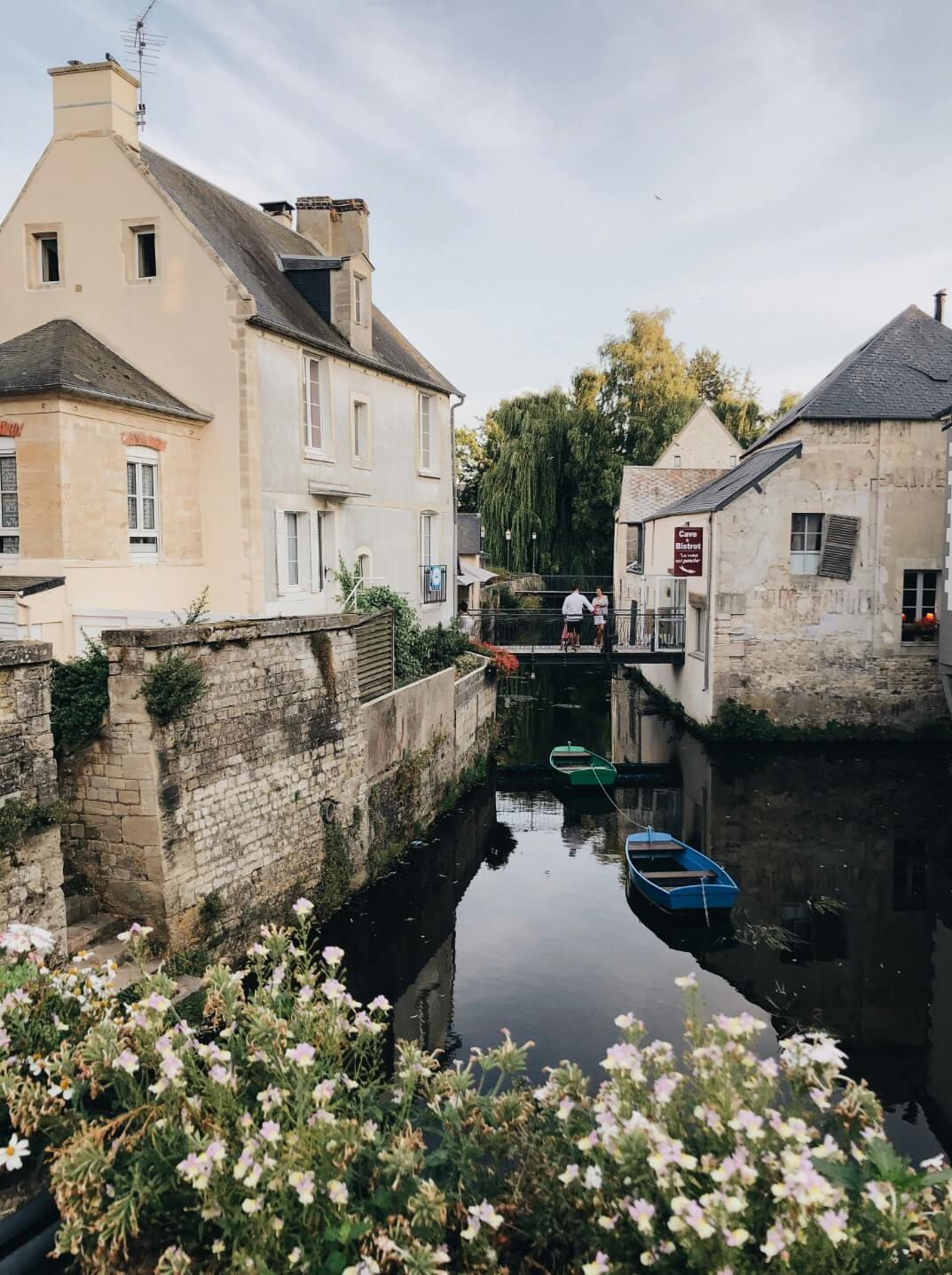
Origins and evolution
The Bessinwith Bayeux as its main historic town, has been inhabited since prehistoric times, as attested by the numerous megalithic remains. The region was profoundly influenced by the Roman era, before changing under the influence of the Viking invasions in the 9th century, which introduced new customs and the feudal system.
The Viking Age
In the 9th century, Bessin became a focal point for Viking invasions of Normandy. These warriors from the north, led by Rollon, took up permanent residence in the region, leaving an indelible mark on its culture and social organization. The peace agreement with the King of France, the Treaty of Saint-Clair-sur-Epte, granted Normandy to Rollon, establishing the Duchy of Normandy, with Bessin at its heart.
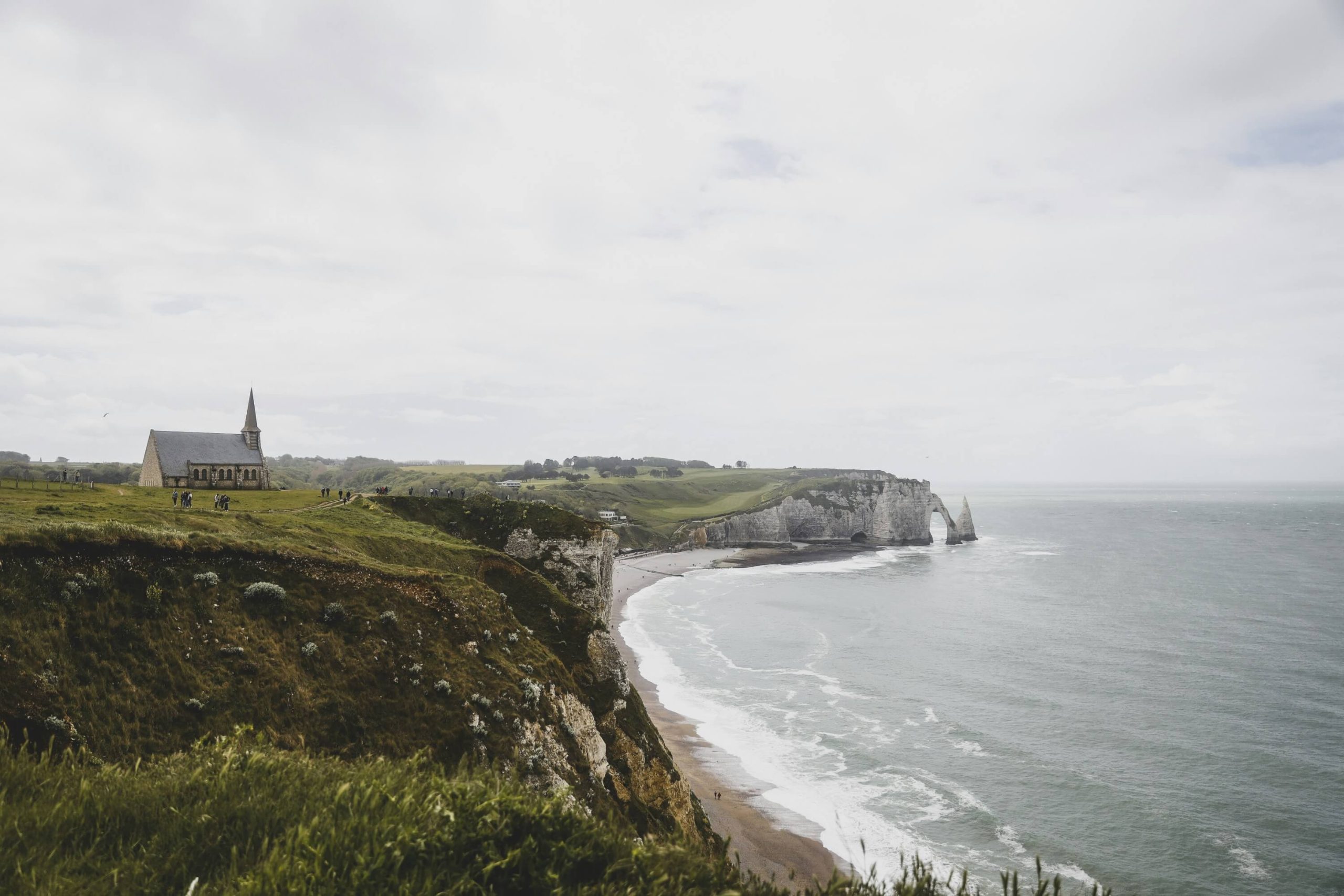
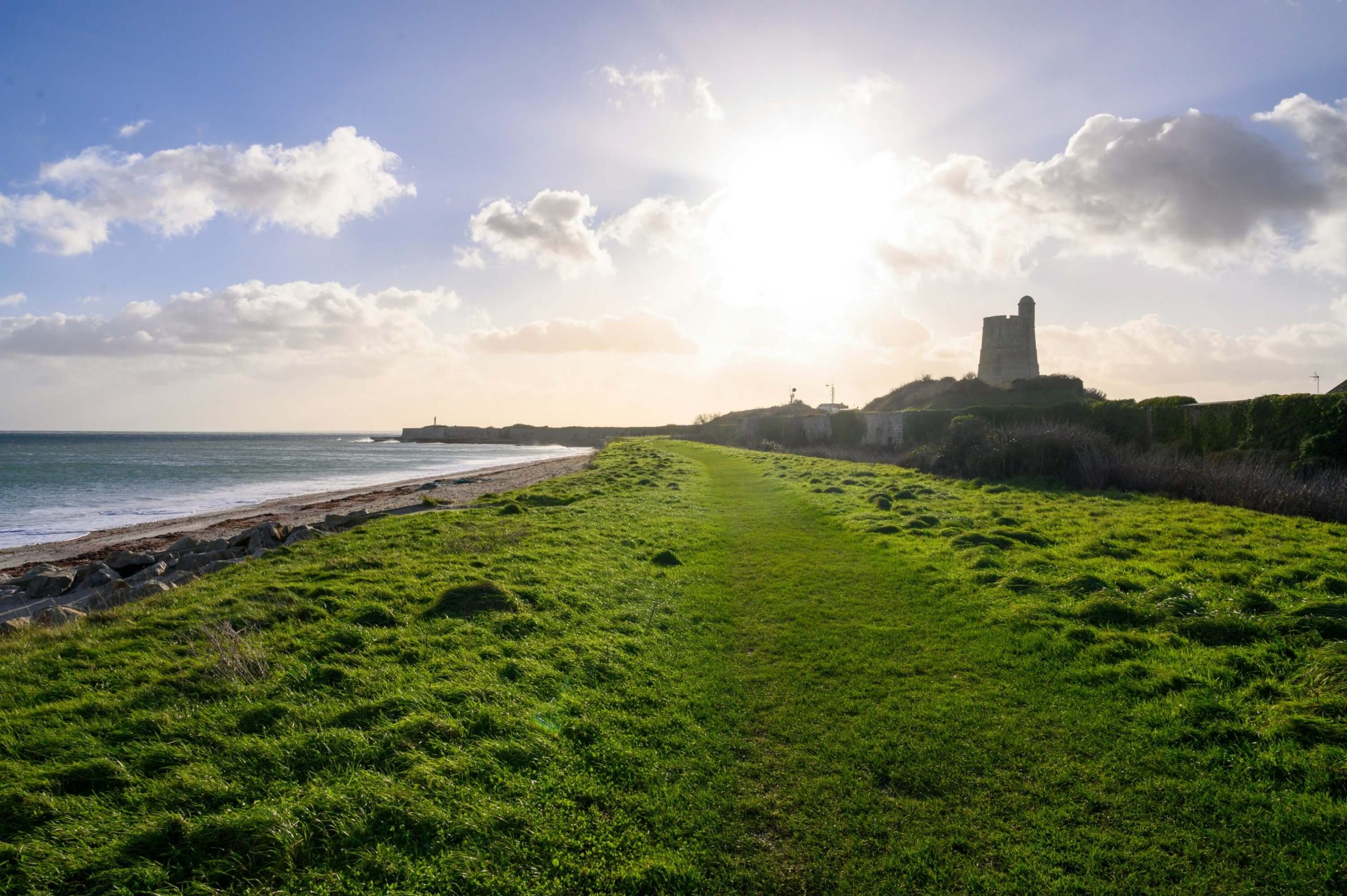
The Hundred Years’ War
The Bessin region played a crucial role in the Hundred Years’ War, the scene of numerous battles between the kingdoms of France and England. Because of its strategic position, the region was fortified, and its castles served as important military bases. The liberation of Normandy by Charles VII in the 15th century marked the end of this tumultuous period.
World War II and D-Day
The Second World War left an indelible mark on the Bessin region, in particular with the Allied landings on the Normandy beaches on June 6, 1944. This military operation, on an unprecedented scale, marked the beginning of the liberation of Western Europe. The Bessin region, and Omaha Beach in particular, became a symbol of the fight for freedom, attracting thousands of visitors every year to pay homage to the Allied soldiers.
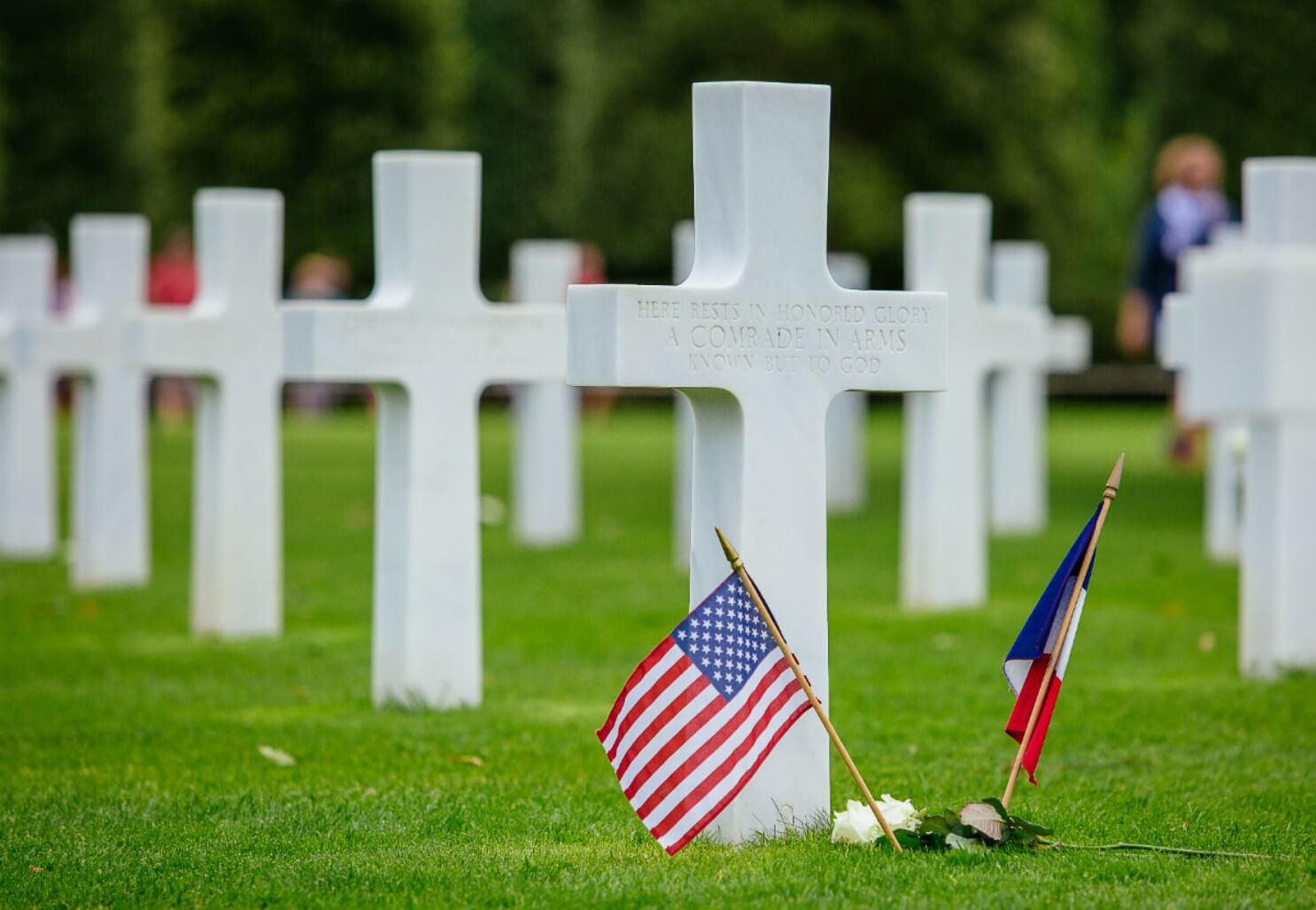
Cities not to be missed
The castles of the Bessin region are privileged witnesses to the tumultuous history and grandeur of Normandy, from the Middle Ages to the Renaissance.
- Château de Balleroy: Built in the 17th century by architect François Mansart, Château de Balleroy elegantly dominates the village of Balleroy. Its classical architecture, formal gardens and Balleroy museum offer a fascinating glimpse into the aristocratic life of yesteryear. The château is also known for its history linked to the Malcolm Forbes family.
- Château de Colombières: This fortified castle, listed as a historic monument, is a remarkable example of medieval military architecture. Set in unspoilt natural surroundings, it reflects the power of the Norman lords of the Middle Ages. To visit Colombières is to plunge into the era of knights and battles for territorial control.
- Château de Creully: Château de Creully is a medieval castle that has evolved over the centuries, bearing the traces of different periods of construction and renovation. It played a significant role in the Second World War, serving as headquarters for Allied journalists. Its rich history can be seen in its towers, stately rooms and fortifications.
Between history, nature and relaxation, a stone’s throw from the D-Day landing beaches
The Bessin region abounds in sites of interest that bear witness to its rich history and natural beauty.
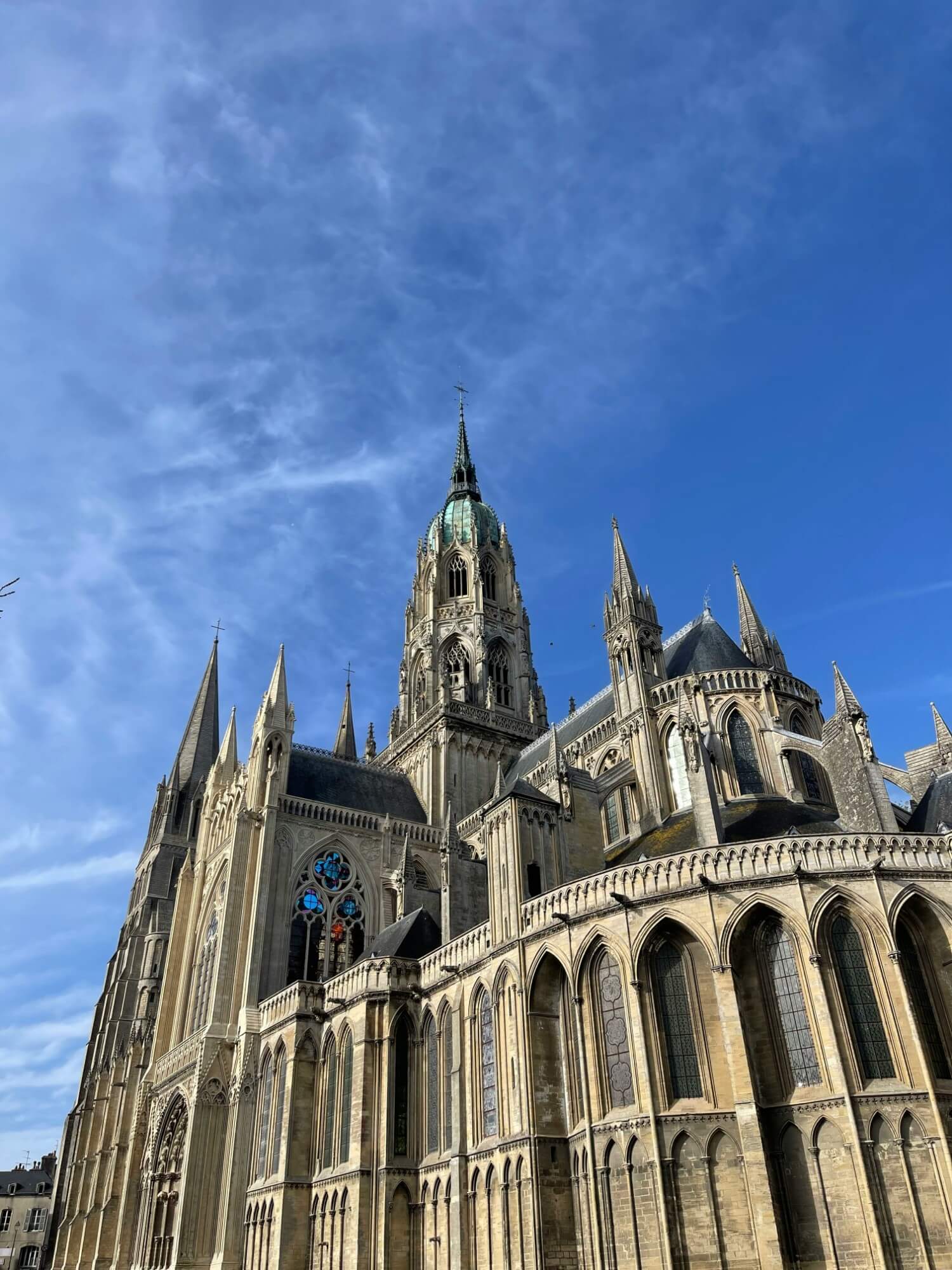
Bayeux and its famous Tapestry
Bayeux, a historic town in the Bessin region, is world-famous for its tapestry, a masterpiece of medieval art. This 11th-century embroidery, included in UNESCO’s Memory of the World register, tells the story of William the Conqueror’s conquest of England. The Bayeux Tapestry Museum offers a fascinating immersion in this historic epic.
D-Day Beaches
The beaches of Omaha, Utah, Gold, Juno and Sword, the scene of the Allied landings on June 6, 1944, are essential places of remembrance. The surrounding museums and military cemeteries pay tribute to the courage of the Allied soldiers. Pointe du Hoc, with its steep cliffs, is a poignant testimony to the bravery of the American Rangers.
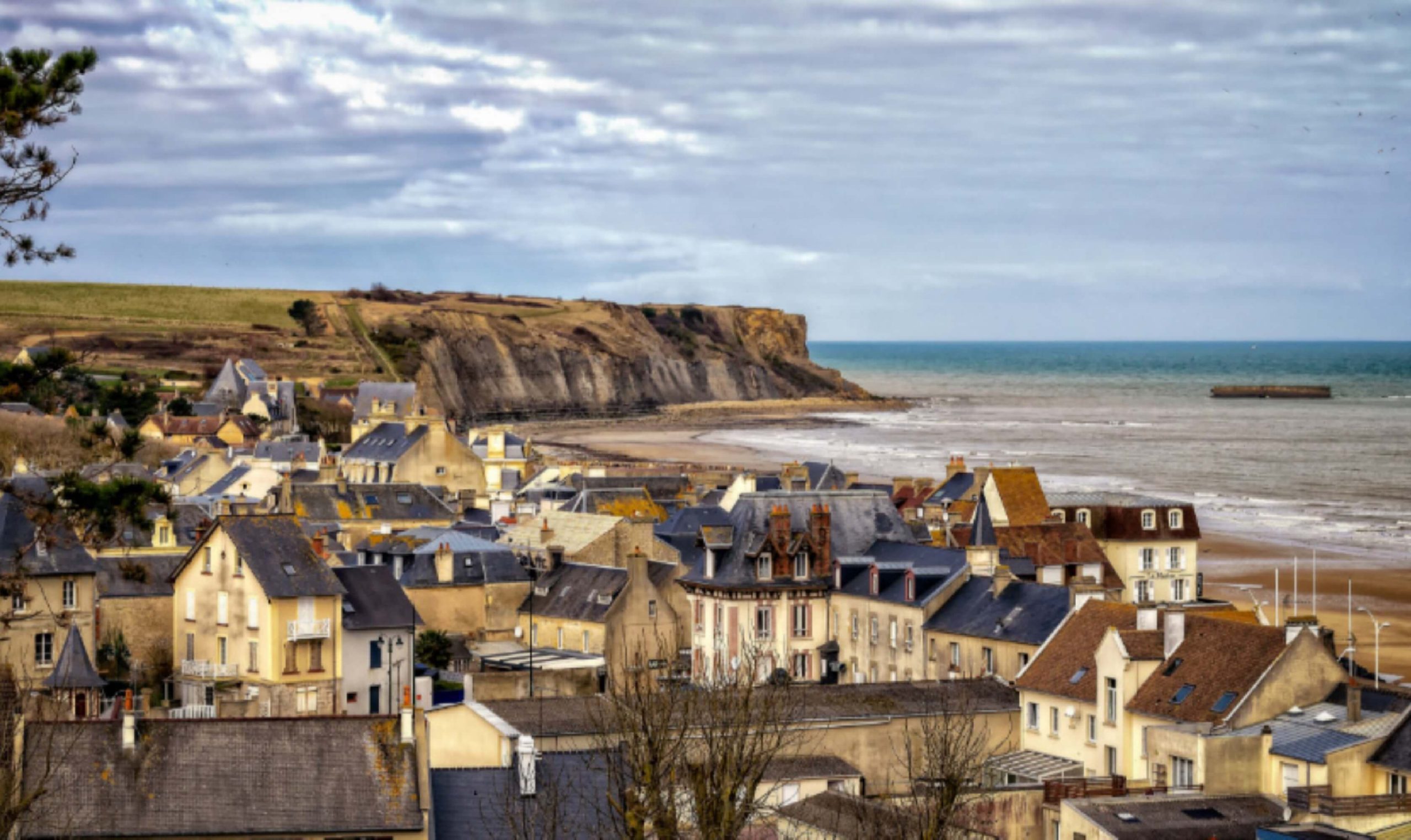
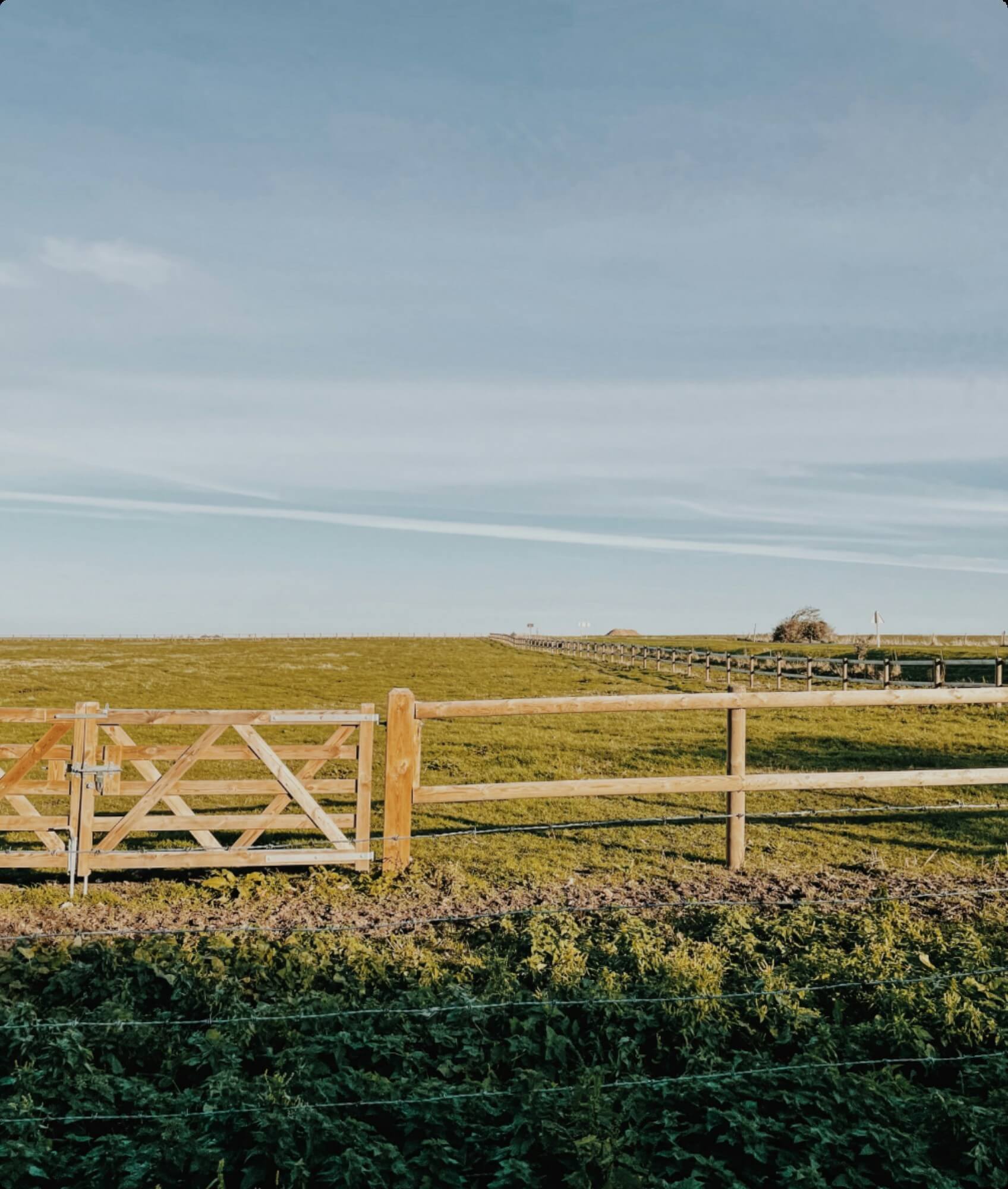
Natural Spaces
The Marais du Cotentin et du Bessin, a regional nature park, is a haven of peace for flora and fauna. Its landscapes of marshes, stretches of water and wet meadows are a paradise for nature lovers and birdwatchers.
Towns and Villages of Character
The Bessin region is dotted with picturesque towns and villages such as Port-en-Bessin, Arromanches-les-Bains and Sainte-Mère-Église. These places steeped in history provide a charming backdrop for discovering the Norman art of living, with half-timbered houses, local markets and traditional festivals.
The architecture of the Bessin is an open book on the history of Normandy, reflecting the influences of different periods, from the Viking invasions to the Renaissance, right through to the impact of the world wars.
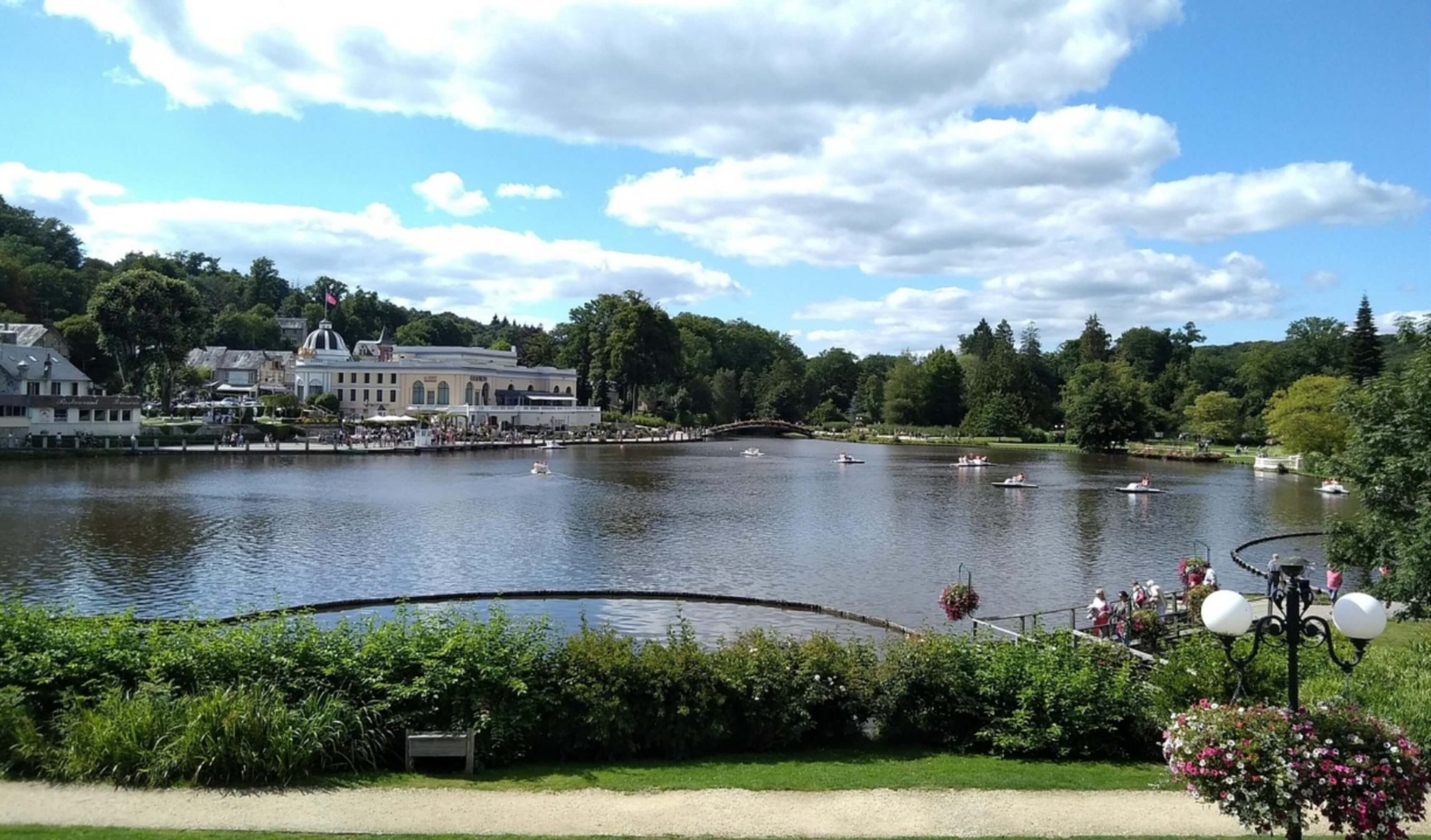

Predominant architectural styles
The Bessin region offers a rich architectural panorama, harmoniously combining Romanesque and Gothic architecture. Churches and abbeys such as Notre-Dame de Bayeux Cathedral perfectly illustrate the transition between these two styles. Their imposing structures, colorful stained-glass windows and sculptural details tell the story of stylistic and technical developments over the centuries.
Churches and historic buildings
Small village churches, often built of local stone, dot the Bessin landscape, each telling its own story. Civilian heritage is not to be outdone, with numerous manor houses and ancient fortified farms testifying to the region’s rich agricultural and feudal history. These buildings, with their thatched or slate roofs, half-timbered facades and dormer windows, embody the rural charm of Normandy.
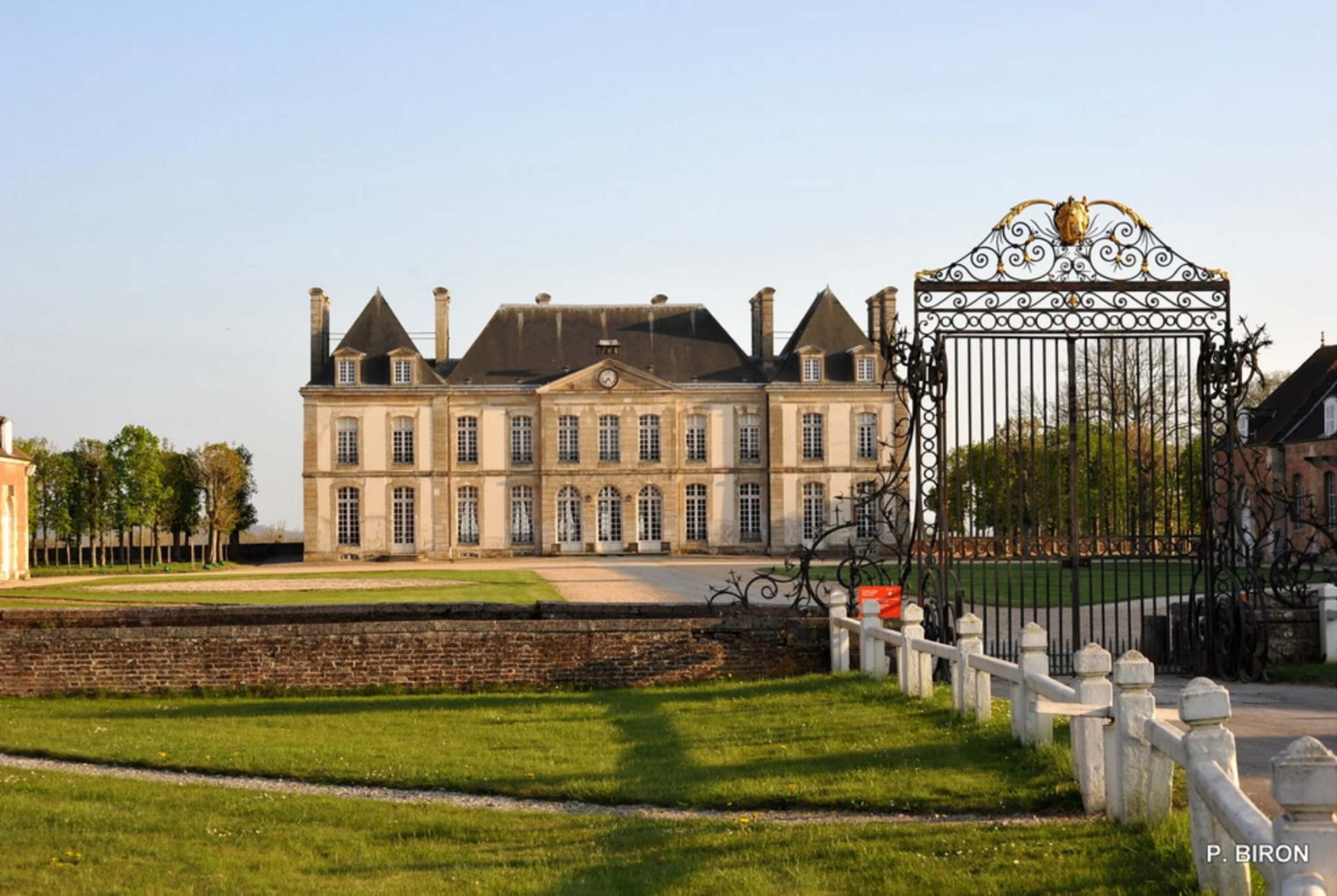

Medieval and Renaissance influences
The medieval influence is felt in the mighty fortifications that line the Bessin, vestiges of the tumultuous history of the region. The Renaissance then brought an architectural revival, visible in the castles and mansions of Bayeux and the surrounding area, where facades were adorned with delicate sculptures and gardens were designed with a new vision of aesthetics.
Don’t wait any longer, come and discover our little piece of Normandy!
The Bessin, with its verdant landscapes, storied beaches, refined gastronomy, picturesque towns and villages, and historic monuments, offers a rich and varied experience to its visitors. Every aspect of this region bears witness to its complex history and rich culture.
To visit Bessin is to discover the soul of Normandy, where past and present meet in an exceptional natural and architectural setting. Whether you’re exploring D-Day sites, admiring medieval and Renaissance architecture, savoring local gastronomy, or simply enjoying the beauty of the Normandy landscape, the Bessin promises unforgettable experiences.
The Bessin region is a permanent invitation to explore, learn and be charmed by its many treasures. It’s a reminder of the importance of preserving and enhancing our cultural and historical heritage for present and future generations. The Bessin is waiting for you to unveil its secrets and beauties, promising an enriching journey to the heart of Normandy.
